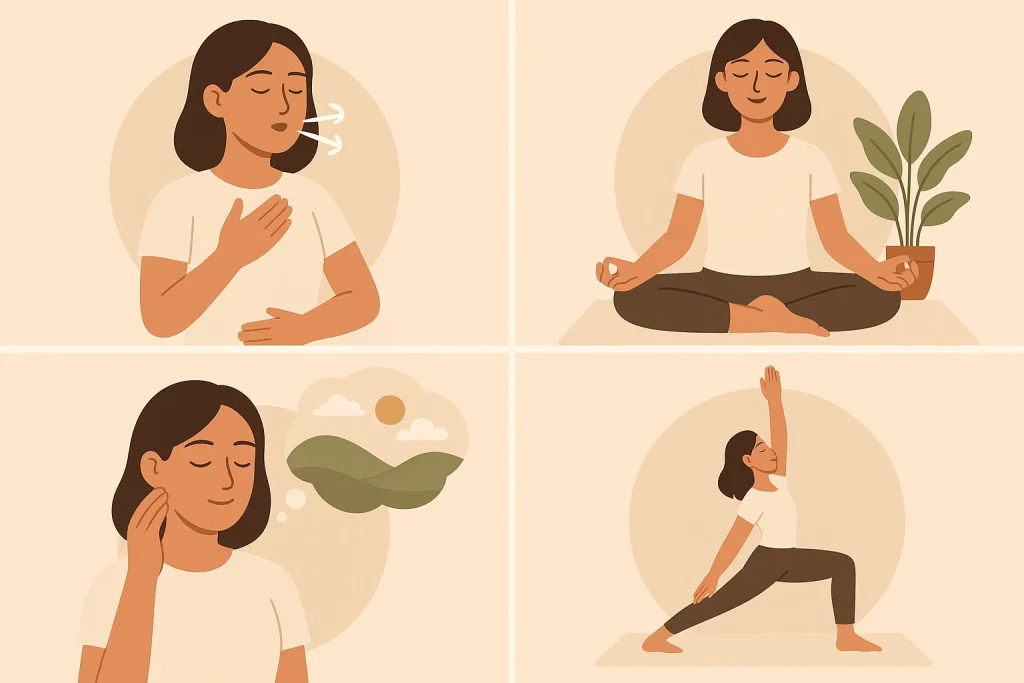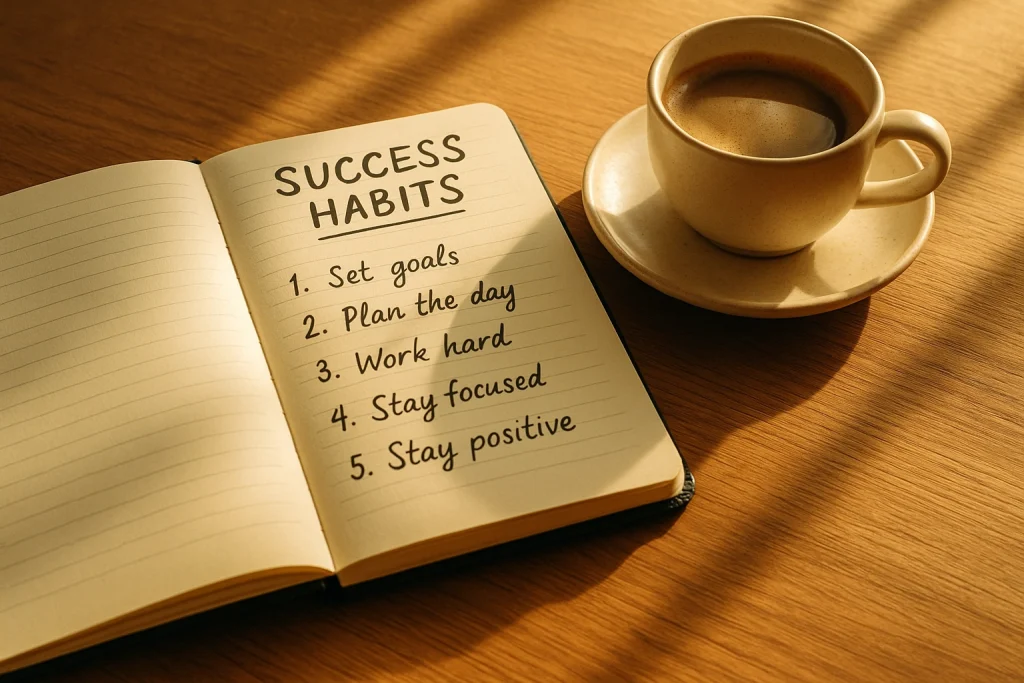Mindfulness Techniques to Reduce Stress Daily

In today’s fast-paced world, stress has become a constant companion for many. Fortunately, mindfulness techniques can help you manage and reduce stress effectively. By focusing on the present moment and adopting simple practices, you can transform your daily routine and cultivate a sense of peace. Here are some mindfulness techniques to incorporate into your day to reduce stress.
1. Focus on Your Breath
One of the simplest and most effective mindfulness techniques is paying attention to your breath. By focusing on your inhalation and exhalation, you can ground yourself in the present moment, calming your mind and reducing stress.
How to do it:
-
Find a quiet spot and sit comfortably.
-
Close your eyes and take slow, deep breaths.
-
Focus on the sensation of air entering and leaving your body.
-
If your mind wanders, gently bring your attention back to your breath.
Pro Tip: Practice mindful breathing for just 5 minutes during the day to reduce stress and restore mental clarity.
2. Body Scan Meditation
Body scan meditation is a mindfulness technique that helps you become aware of physical tension and stress in your body. It can help release any built-up stress and promote relaxation.
How to do it:
-
Lie down in a comfortable position and close your eyes.
-
Starting from your toes, mentally note any sensations or areas of tension.
-
Gradually move up through your body, paying attention to each part without judgment.
-
Allow yourself to relax deeper with each breath as you release tension.
Pro Tip: Perform a body scan at the beginning or end of your day to ease tension and promote relaxation.
3. Mindful Walking
Mindful walking combines movement with mindfulness, allowing you to ground yourself while reducing stress. It’s a great technique to practice outdoors or even indoors in a quiet space.
How to do it:
-
Walk slowly and deliberately, focusing on each step.
-
Pay attention to the sensation of your feet touching the ground and the rhythm of your movement.
-
Breathe in sync with your steps, maintaining awareness of your surroundings.
-
Notice any sounds, smells, or sights without judgment, bringing your full attention to the experience.
Pro Tip: Take a mindful walk during your lunch break or after work to clear your mind and release stress.
4. Guided Meditation
If you’re new to mindfulness or find it challenging to focus, guided meditation is a great way to get started. With the help of a meditation app or audio, you can follow a guided session that leads you through relaxation techniques.
How to do it:
-
Find a quiet space and sit or lie comfortably.
-
Use a meditation app or online video with a guided mindfulness practice.
-
Follow the instructions, focusing on your breath, body, or visualizations as guided.
-
Allow yourself to fully immerse in the experience, letting go of distractions.
Pro Tip: Try a guided meditation in the morning to start your day with calm, or use it during stressful moments throughout the day.
5. Mindful Eating
Mindful eating involves paying full attention to the food you’re eating and savoring each bite. It’s an effective way to reduce stress and prevent overeating by fostering a greater appreciation for your meals.
How to do it:
-
Sit down to eat without distractions like your phone or TV.
-
Focus on the taste, texture, and smell of each bite.
-
Chew slowly and pay attention to how your food feels in your mouth.
-
Notice when you feel satisfied and stop eating when you’re full.
Pro Tip: Try mindful eating at least once a day, focusing on enjoying the experience of your meals and slowing down.
6. Journaling for Mindfulness
Journaling allows you to reflect on your thoughts and emotions, reducing stress by giving you a safe outlet to process your feelings. It also helps increase self-awareness and can serve as a mindfulness practice.
How to do it:
-
Set aside time each day to write in a notebook or digital journal.
-
Reflect on your emotions, thoughts, or experiences from the day.
-
Don’t worry about grammar or structure—just write freely.
-
Focus on being present in the moment while writing, without judgment.
Pro Tip: Write for at least 10 minutes a day to release stress and gain clarity about your emotions.
7. Loving-Kindness Meditation (Metta)
Loving-kindness meditation is a mindfulness practice focused on sending positive thoughts and compassion toward yourself and others. This technique can help cultivate a sense of peace, reduce negative emotions, and increase empathy.
How to do it:
-
Sit in a comfortable position and close your eyes.
-
Begin by silently repeating phrases like, “May I be happy, may I be healthy, may I be at peace.”
-
Then, gradually extend these wishes to others, starting with loved ones and eventually all living beings.
-
Focus on the warmth and compassion these thoughts bring.
Pro Tip: Practice loving-kindness meditation when you’re feeling stressed or upset to shift your mindset and cultivate compassion.
8. Digital Detox
In today’s hyper-connected world, constant exposure to screens and social media can increase stress levels. A digital detox allows you to take a break from technology and reconnect with the present moment.
How to do it:
-
Set aside specific times each day or week to disconnect from your phone, computer, and other screens.
-
Use this time to focus on mindfulness practices, such as reading, walking, or meditating.
-
Avoid checking emails or social media during this detox period.
Pro Tip: Try a digital detox for at least an hour a day to reduce stress and improve your focus and well-being.
Conclusion
Incorporating mindfulness into your daily routine can help you reduce stress and live a more peaceful, balanced life. Whether through focused breathing, body scan meditations, or mindful eating, these techniques provide simple, effective ways to reconnect with the present moment. By making mindfulness a habit, you can foster greater calm, reduce anxiety, and manage stress more effectively every day.





